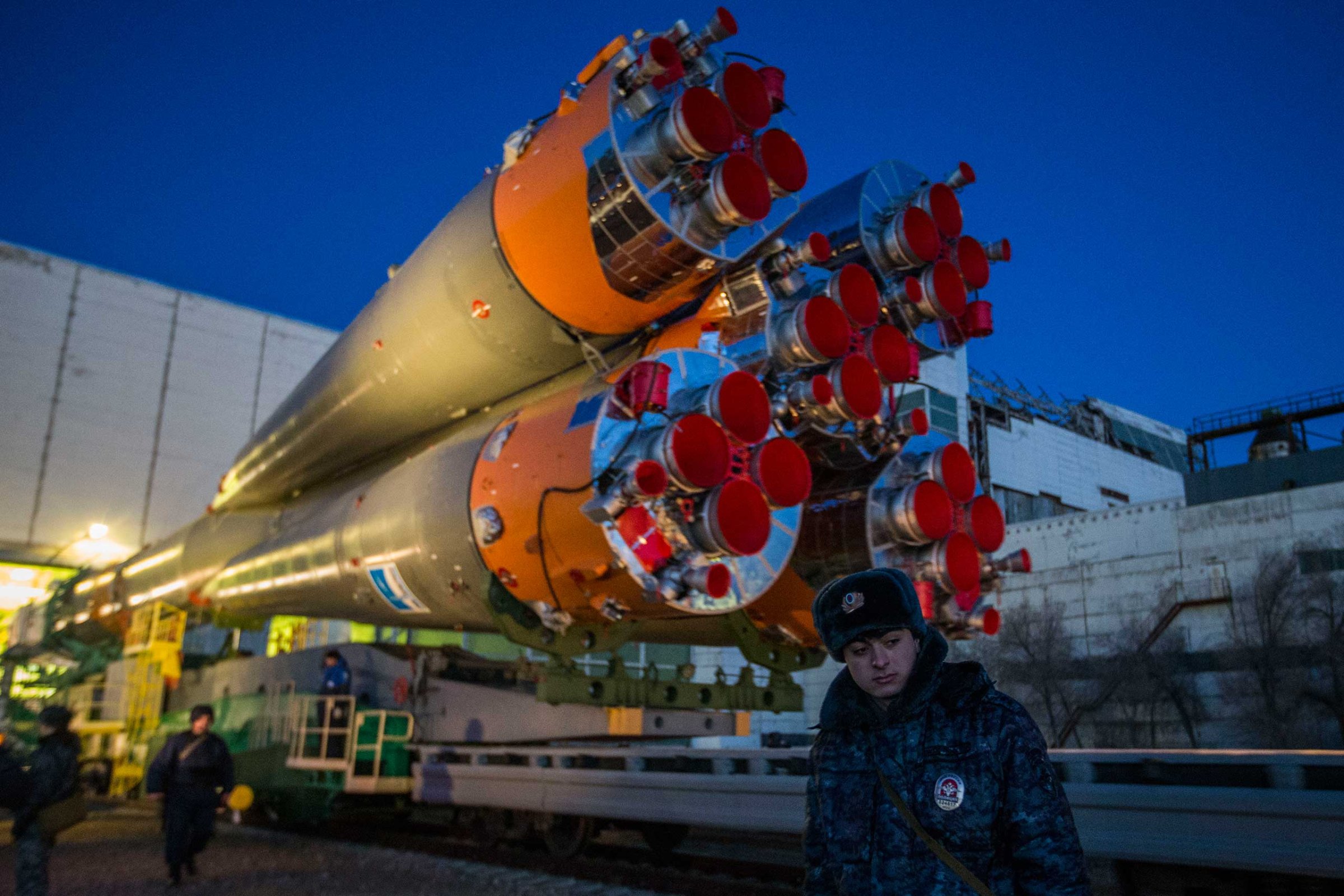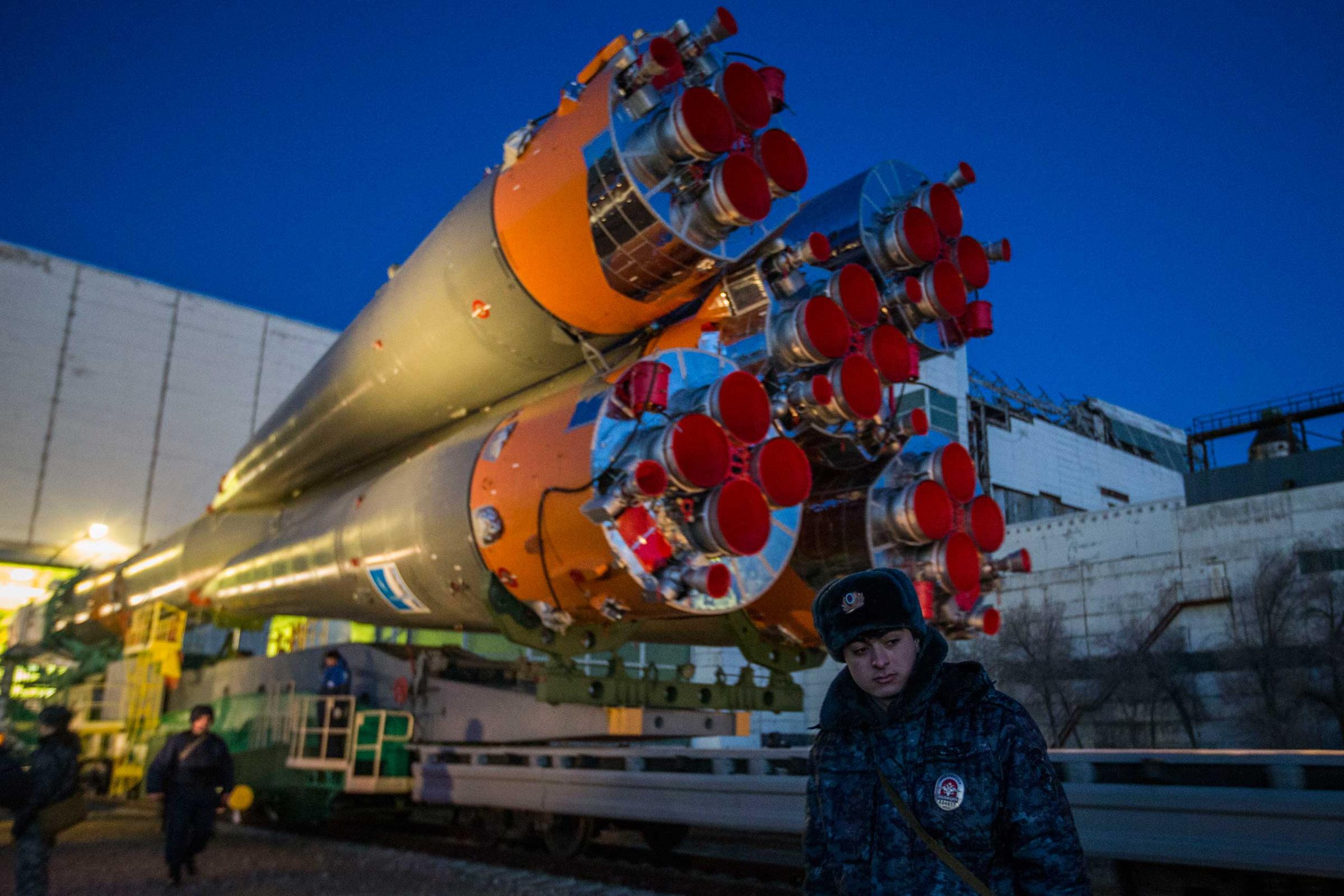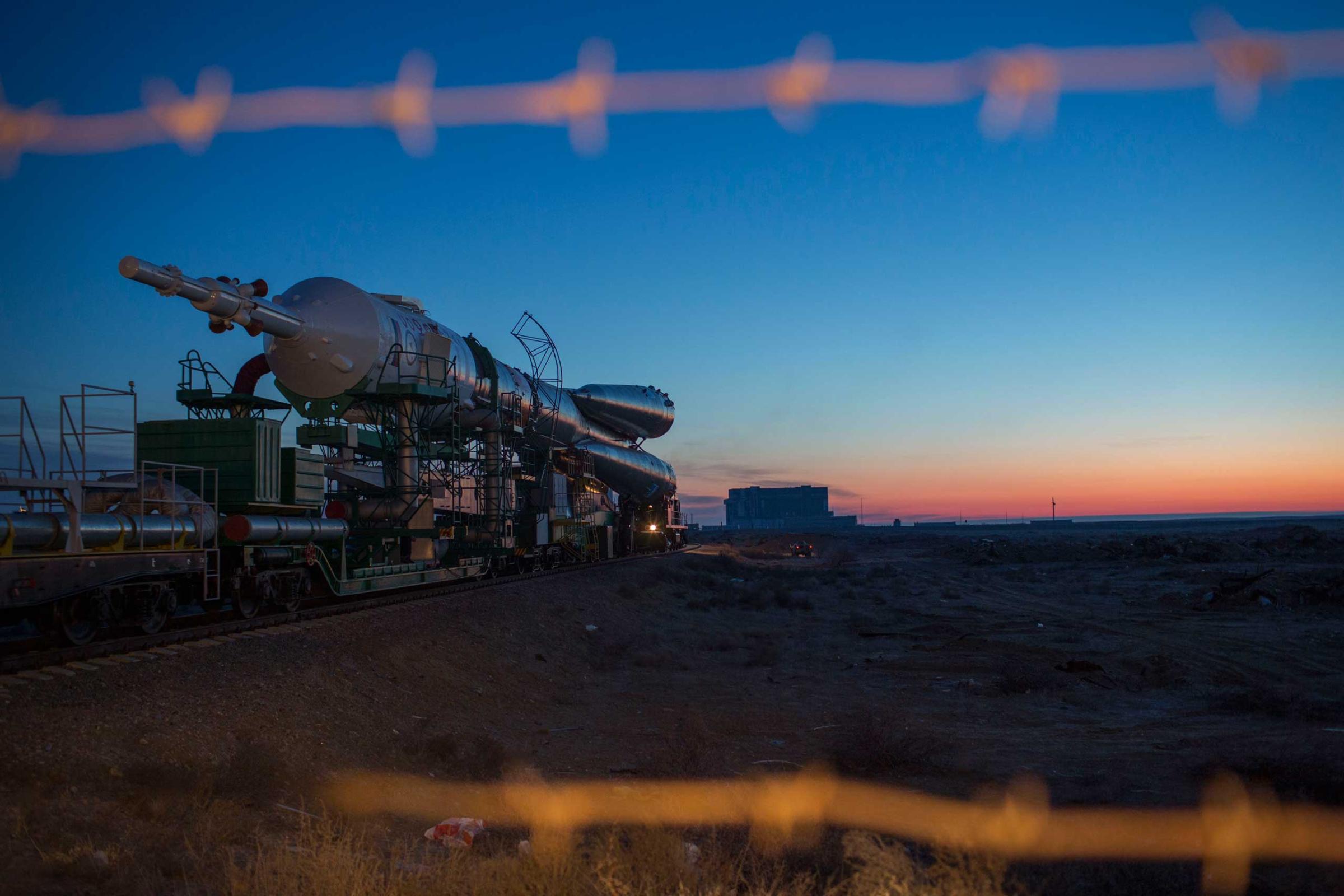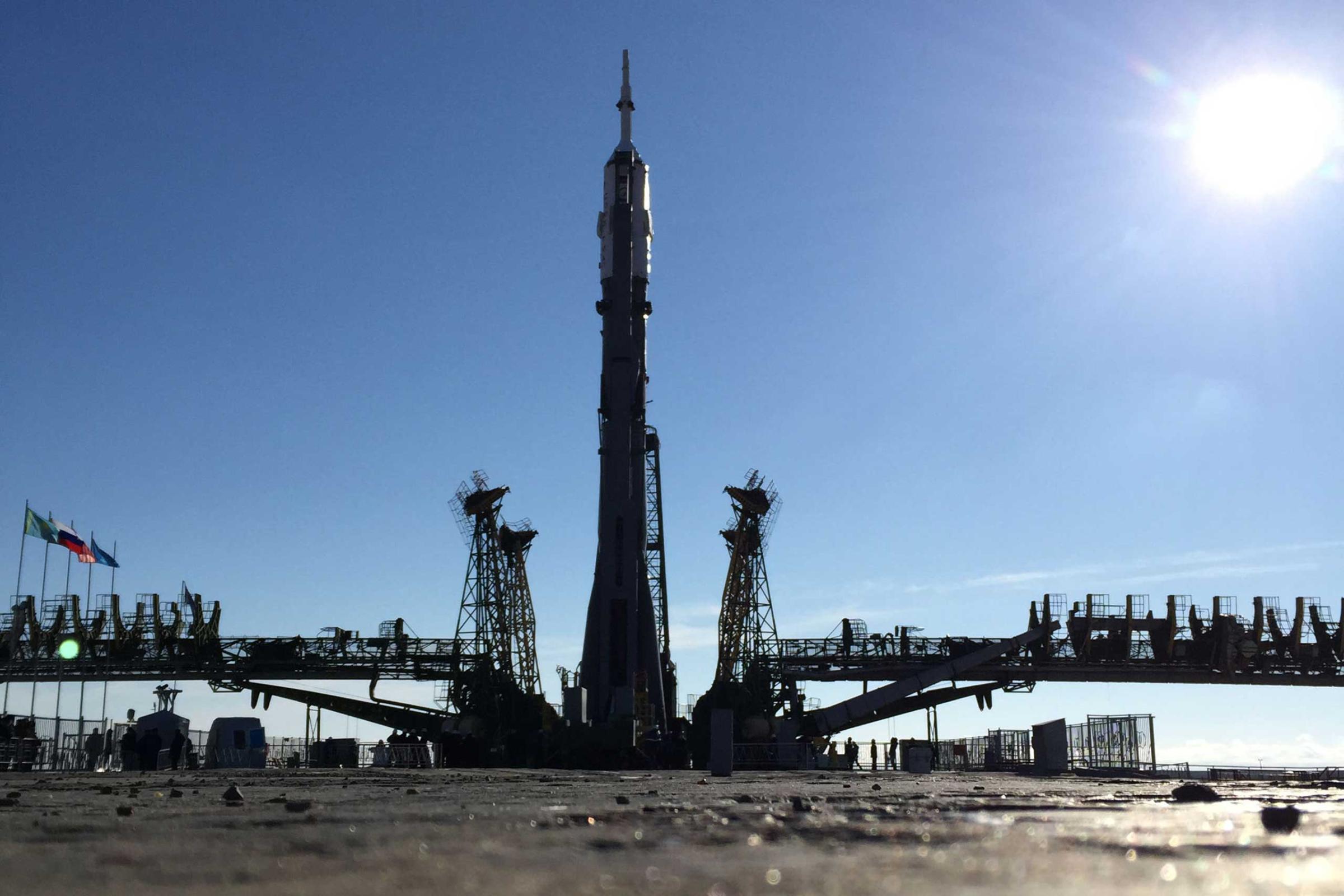
All activity stops in the vicinity of a Soyuz rocket after the dog walks. The dog will walk on a lot of occasions, but especially the day the rocket rolls out to the pad. The two kilometer (1.25 mi.) trip takes more than two hours to complete, with the rocket lying on a flat-bed rail car and the train chugging no faster than 5 km/h, (3 mph) making multiple stops along the way.
MORE: Watch the Trailer for TIME’s Unprecedented New Series: A Year In Space
At one point en route, the rail line crosses a road, and even on the locked-down, sealed-off grounds of the Baikonur Cosmodrome, that calls for special security—a bomb-sniffing dog to check the crossing when the train is still at least half a kilometer away. If you’re on the wrong side of the track after that, you’re out of luck. Nothing at all moves until the rocket crawls past, making its exceedingly slow way to the pad—preparatory to making its exceedingly fast way to space a couple of days later.
Like everything else in the Russian space program, the rollout proceeds according to ritual—determined by the needs of both the very breakable machines and the very superstitious people who build and fly them. Before dawn on March 25, the Soyuz set to carry astronaut Scott Kelly and cosmonauts Gennady Pedalka and Mikhail Kornienko to the International Space Station—with Kelly and Kornienko scheduled to spend a year aloft—emerged slowly from its hangar.
Factoring in the wind chill, it was 18º F (-8º C) in the Kazakh steppe, with the engine pulling the Soyuz the only thing anywhere emitting any heat—and not much at that. The Soyuz emerges business end first, which is to say bottom end first, and that’s a good way to meet it. It takes 20 engines bundled in five clusters to produce the thrust the rocket will need to muscle itself off the ground. The top of the rocket where the crew rides ride is the prettier end—painted white and decorated with a Russian flag and the Roscosmos logo—but the men will never get to space in the first place without the fire the engines provide.
The route to the launch pad is lined by technicians, security officers and other personnel, including a Russian Orthodox priest, who will bless the rocket and the crew the following day. Amiko Kauderer, Kelly’s significant other, is here as well and while she’s plenty inured to the idea of space flight—this will be Kelly’s fourth time aloft—she is as struck by the sheer physicality of the rocket as anyone else.
“Isn’t it gorgeous?” she says. “My guy’s got a hot ride.”
The most prominent people not in attendance are the crewmen themselves, and that’s not only because they’re in pre-flight medical quarantine. “It’s T-minus 64 hours,” says astronaut Mike Fincke, who has himself launched twice from Baikonur and today is serving the traditional role of astronaut escort to a fellow astronaut’s family—in this case Kauderer and Kelly’s two daughters, Samantha, 20, and Charlotte, 11. “The crew has a lot of other things to do, but it’s also part of the tradition and superstition for them to stay away. It’s like not seeing the bride before the wedding.”
When the Soyuz reaches the pad, it still must be stood upright, a process that was once called its erection, until everyone just got tired of the jokes—especially after the Americans began flying out of the old Soviet space port. Now the term is “verticalizing.”
Whatever it’s called, it’s a slow exercise and even with the sun up, the air is bitter. “Someone text Uncle Mark and tell him to bring some hand warmers,” says Charlotte. Uncle Mark, of course, is Kelly’s twin brother, also an astronaut, also with four missions on his manifest—though all of his were made from the decidedly more temperate Cape Canaveral.
It’s only when the rocket is finally raised, briefly standing alone on the pad before it’s caged in its gantry, that the thrill—and the brazenness—of what it will do in 64 hours seems real. Cosmonauts and astronauts have been flying into space since Yuri Gagarin took off from the very same pad on April 12, 1961, and it has never been less than a hellishly dangerous business—putting human beings inside a massive machine filled with explosive fuel and, effectively, lighting a match. The fact that things have gone right far more often than they’ve gone wrong does not make every new attempt any easier or more certain.
“I have lots of mixed emotions, when you realize he’s going to be on top of that,” says Kauderer. “To quote Scott, ‘It’s about to get real.'”






More Must-Reads From TIME
- The 100 Most Influential People of 2024
- The Revolution of Yulia Navalnaya
- 6 Compliments That Land Every Time
- What's the Deal With the Bitcoin Halving?
- If You're Dating Right Now , You're Brave: Column
- The AI That Could Heal a Divided Internet
- Fallout Is a Brilliant Model for the Future of Video Game Adaptations
- Want Weekly Recs on What to Watch, Read, and More? Sign Up for Worth Your Time
Write to Jeffrey Kluger at jeffrey.kluger@time.com